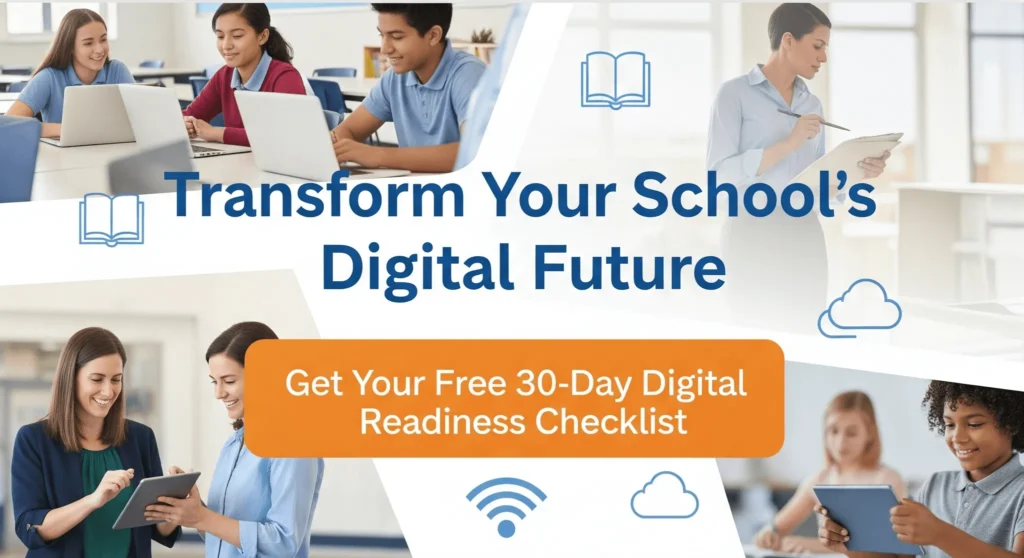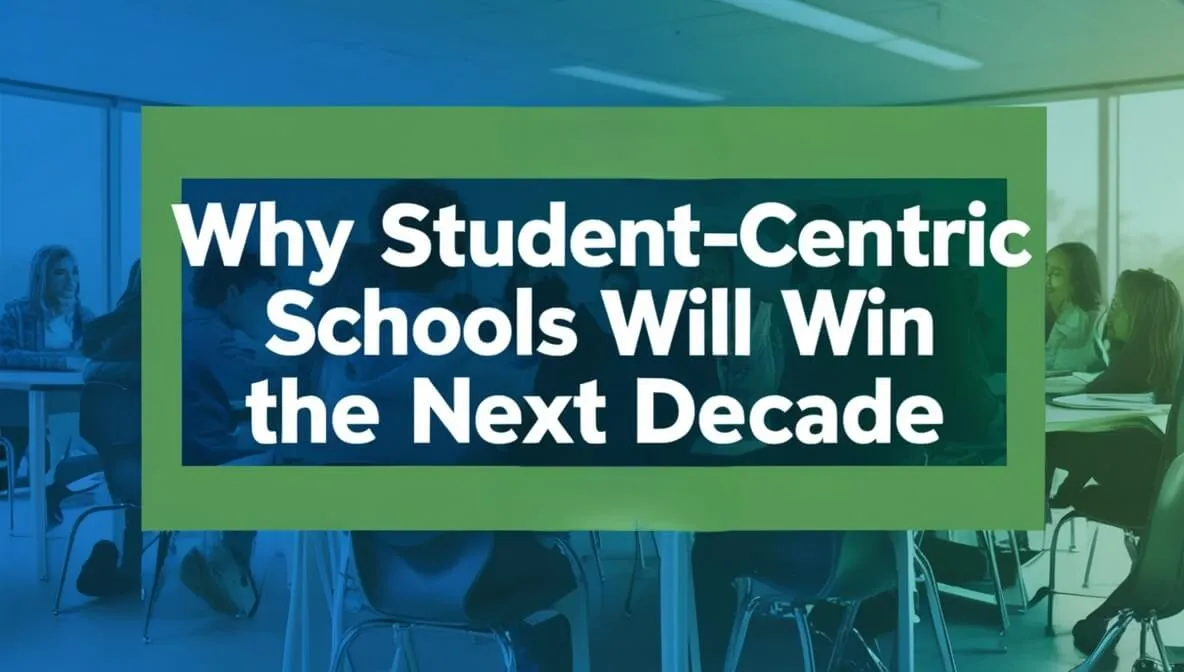Table of Contents
- Introduction
- Quick snapshot: What you’ll learn
- Why student-centric schools will win
- What defines student-centric schools?
- Evidence & trends supporting student-centric schools
- The business case: enrollment, outcomes, reputation
- 7 practical strategies to become a student-centric school
- Technology & digital transformation for student-centric schools
- Case examples and quick wins
- Implementation roadmap — 12-month plan
- Measuring success: KPIs for student-centric schools
- Common objections and how to answer them
- FAQ
- Example lesson plan: 2-week project for a student-centric school
- Conclusion — Why now is the moment for student-centric schools
- Take the Next Step Toward Becoming a Student-Centric School
Introduction
Parents, leaders, and teachers ask the same question: how do we prepare learners for a volatile future? Traditional models push content and test scores. Meanwhile, students need skills, voice, and purpose. The rise of student-centric schools answers that gap. By centering learning around each learner, schools boost engagement, deepen mastery, and future-proof careers. In short, student-centric schools are not an optional upgrade — they are the survival strategy for the next decade. This post explains why, how, and what steps your school or institute can take today to become student-centered through personalized learning and digital transformation.
Quick snapshot: What you’ll learn
- Why student-centric schools have a competitive edge.
- Evidence-backed benefits and recent trends.
- Practical roadmap: governance, pedagogy, tech, assessment.
- Real examples and measurable KPIs.
- FAQs and a direct call-to-action for school leaders.
Why student-centric schools will win
The education landscape rewards relevance. Families choose schools that deliver measurable growth, wellbeing, and employability. Here’s why student-centric schools will outpace traditional models:
- They match learning to student needs (personalized learning), raising retention.
- Than they build transferable skills — critical thinking, communication, and collaboration.
- They adopt flexible assessment (competency-based education) that proves mastery.
- They attract teachers and parents who see tangible impact.
Because of these advantages, enrollment, reputation, and outcomes shift toward schools that make learners the center of every decision.
What defines student-centric schools?
At its core, a student-centric school organizes policy, curriculum, and culture around learners. Key features include:
- Learner agency: Students choose topics, projects, and pacing.
- Personalized learning paths: Instruction adapts to strengths and gaps.
- Competency-based assessment: Progress is based on mastery, not seat time.
- Holistic support: Wellbeing, counselling, and career guidance are integrated.
- Data-informed instruction: Learning analytics guide teachers and students.
These components turn passive recipients into active designers of their learning journeys.
Student-centric schools vs traditional schools — quick comparison
| Feature | Traditional school | Student-centric schools |
|---|---|---|
| Curriculum | Fixed syllabus | Flexible, modular pathways |
| Assessment | High-stakes, summative | Competency-based, formative |
| Role of teacher | Content deliverer | Coach & designer |
| Pacing | Same for all | Individualized pacing |
| Student voice | Limited | Central to decisions |
Evidence & trends supporting student-centric schools
Research and EdTech trends increasingly favor learner-centered approaches. Recent pilot programs and meta-analyses show gains in learning and wellbeing when schools adopt personalized, student-centered models. Moreover, technology (adaptive platforms, analytics, AI tutoring) now enables scalable personalization. For school leaders, the implication is clear: early adopters will convert better learning outcomes into reputation and enrolment growth.
The business case: enrollment, outcomes, reputation
When schools shift to student-centered models they see improvements in three business areas:
- Enrollment growth. Parents search for schools that prioritize outcomes and skills. A clear, student-centric value proposition attracts families.
- Retention and lifetime value. Students who feel seen stay longer and produce positive word-of-mouth.
- Performance metrics. Competency-based records and richer learner portfolios help graduates stand out.
In short, student-centric shifts align educational value with market demand.
7 practical strategies to become a student-centric school
Adopting student-centered practices is a program, not a single workshop. Below are seven practical, sequenced strategies for school leaders.
1. Start with a clear learner vision
- Define what success looks like for every student. Include wellbeing and skills.
- Co-create the vision with students, parents, and teachers.
2. Move to competency-based assessment
- Break curricula into clear competencies and rubrics.
- Use mastery tracking rather than only term grades.
3. Build personalized learning pathways
- Use diagnostics to map student needs.
- Offer blended learning options: micro-lessons, project blocks, tutoring.
4. Invest in teacher capacity
- Train teachers as facilitators and designers.
- Provide micro-credentials for coaching, data analysis, and assessment design.
5. Choose the right EdTech stack
- Adopt adaptive platforms, an LMS with mastery tracking, and analytics dashboards.
- Prioritize interoperability and data privacy.
6. Rewire schedules and spaces
- Create project blocks, maker spaces, and flexible timetables.
- Free time for student-led inquiry and teacher coaching.
7. Measure what matters
- Track learning growth, engagement, and wellbeing.
- Use dashboards that report progress to students, teachers, and parents.
Technology & digital transformation for student-centric schools
Technology is an accelerator, not a substitute. Smart tech choices make personalized learning scalable. Key tech elements:
- Adaptive learning platforms tailor content to learner level.
- Learning analytics identify gaps and next steps.
- Digital portfolios showcase competency growth to parents and recruiters.
- AI tutoring & feedback speed up personalized practice.
When combined with strong pedagogy, these tools let student-centric schools offer differentiated instruction at scale.

Case examples and quick wins
Real schools and pilot programs show measurable gains from student-centric shifts. Examples include localized personalized learning pilots that accelerated learning gains and wellbeing-focused schedule changes that improved engagement. Small, replicable wins include:
- Launching a diagnostic and a personalized pathway pilot in one grade.
- Replacing a single high-stakes test with a portfolio review.
- Training a cohort of teachers in coaching and data-driven instruction.
These pilots build trust and demonstrate impact quickly.
Implementation roadmap — 12-month plan
Below is a pragmatic roadmap your school can use this year.
| Month(s) | Focus | Deliverable |
| 1–2 | Vision & stakeholder buy-in | Learner vision, stakeholder workshops |
| 3–4 | Diagnostics & baseline | Student skill baseline reports |
| 5–6 | Teacher training pilot | 10–15 teachers trained, micro-credentials |
| 7–9 | Tech & pilot rollout | Adaptive platform + one-grade pilot |
| 10–12 | Scale & evaluation | School-wide review, KPIs set |
Measuring success: KPIs for student-centric schools
Track a mix of academic and human-centred KPIs:
- Learning growth (value-added scores)
- Mastery rate per competency
- Student engagement & attendance
- Social-emotional wellbeing index
- Parent satisfaction and Net Promoter Score (NPS)
Use short feedback loops and iterate fast.
Common objections and how to answer them
Objection 1: “This will be expensive.” — Start small. Pilot one grade and reuse materials. Cost drops as systems scale.
Objection 2: “Teachers will resist.” — Involve them early. Offer micro-credentials and time for co-design.
Objection 3: “We must cover the syllabus.” — Map competencies to syllabus outcomes. Personalized pacing still covers standards.
Objection 4: “How do we ensure equity?” — Use targeted supports and data to close gaps. Student-centric designs can shrink the opportunity gap when implemented with equity in mind.
FAQ
What are student-centric schools?
Student-centric schools are institutions that place learner agency, personalized learning, and competency-based assessment at the heart of schooling. They design curriculum and schedules around students’ needs.
How does student-centered learning differ from traditional teaching?
Student-centered learning prioritizes active, inquiry-driven learning. Unlike lecture-based instruction, it focuses on projects, choices, and mastery — and is central to student-centric schools.
Will student-centric schools improve exam results?
Yes. When paired with diagnostic feedback and targeted interventions, student-centric schools typically show improved learning growth and deeper conceptual understanding, which reflects in better exam performance.
What role does technology play in student-centric schools?
Technology enables personalized learning at scale — through adaptive platforms, analytics, and digital portfolios — making student-centric practices measurable and repeatable.
How can a small coaching institute adopt student-centric approaches?
Start with learner diagnostics, modularize content, and introduce competency badges. Even small institutes can create personalized study plans and track mastery.
Example lesson plan: 2-week project for a student-centric school
Theme: Urban Water — Solve a local problem
Week 1:
- Day 1: Student teams choose a research question.
- Day 2–3: Research & data collection (community interviews).
- Day 4: Mini-lesson on data literacy.
- Day 5: Prototype solutions.
Week 2:
- Day 1–2: Refine solution; teacher coaching sessions.
- Day 3: Peer feedback & rubric-based assessment.
- Day 4: Final presentations and digital portfolio uploads.
- Day 5: Reflection and next-step planning.
This project uses student choice, real-world context, and competency-based rubrics — the hallmarks of student-centric schools.
Conclusion — Why now is the moment for student-centric schools
The next decade belongs to schools that put learners first. Student-centric schools combine proven pedagogy, scalable EdTech, and competency-based systems to deliver better outcomes, higher engagement, and stronger reputations. For leaders, the decision is strategic: invest now, pilot fast, and scale what works. The payoff is measurable — in learning growth, wellbeing, and community trust.
Take the Next Step Toward Becoming a Student-Centric School
Is your school or institute ready to lead the next wave of education? Contact Legacy EdTech for a tailored roadmap, diagnostic pilot, and teacher-upskilling plan that will transform your institution into one of the student-centric schools parents trust. Book a free consultation today and start the 12-month transformation.







